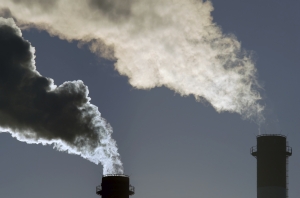To reduce greenhouse gas (GHG) emissions, create jobs and grow the economy, the Australian Labor Party (ALP) has developed the “Powering Australia Plan”, underpinned by policy measures for three key sectors of the economy – Electricity, Industry & Carbon Farming, and Transport – which represented 79% of national emissions in 2020-21.
RepuTex has been engaged by the ALP to analyse the GHG emissions and economic impacts of the Powering Australia Plan.
Specifically, analysis considers the individual and aggregate impact of ALP policy settings on GHG emissions reductions relative to a reference year, job creation, direct and indirect investment, and wholesale electricity prices. Key outcomes include:
- Accounting for new policy measures, the ALP’s Powering Australia Plan is projected to achieve a 43% reduction in national GHG emissions on 2005 levels by 2030.
- Total investment of $75.8 billion is calculated by 2030, equivalent to 3% of Gross Domestic Product (GDP) in 2030, with the Plan leveraging $2.15 in private investment for every public dollar spent.
- Investment unlocked by the ALP’s Powering Australia Plan is projected to create 604,000 jobs by 2030 relative to a business-as-usual scenario, 74% of which are attributed to the decarbonisation of the Electricity sector, 22% attributed to the Industry & Carbon Farming segment, and 4% to the Transport sector.
Outcomes by key policy measure include:
- Adoption of the Business Council of Australia’s (BCA) recommendation to improve the Safeguard Mechanism represents a considerable opportunity to align federal policy with corporate commitments to reach net-zero, while creating a transparent signal for private sector investment in least-cost emissions reductions.
- Improvements to the Safeguard Mechanism are projected to deliver 213 Mt of GHG emissions reductions by 2030, with investment in internal and external abatement estimated to create 1,600 jobs by 2030, 5 out of 6 (83%) regional areas.
- The Rewiring the Nation policy is designed to bring forward the construction of high voltage infrastructure by lowering financial and planning barriers to the commercial development of large-scale renewable energy resources. This will support new Renewable Energy Zone development, with renewable capacity projected to grow by 26 GW by 2030, increasing to 82% of all NEM generation, up from 68% under current policy.
- Increased renewable energy penetration is projected to result in lower electricity prices, with annual average NEM wholesale prices forecast to reduce by 18% ($11 MWh) by 2025 from today’s levels ($62 MWh), and 26% ($16 MWh) by 2030. Refer to our note on retail bill interpretation.
Analysis in this report is summarised for each policy setting, along with the aggregated impact of all policy settings collectively.
















